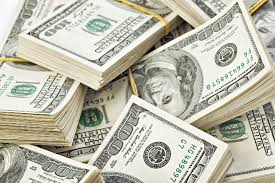Dollar dips as retail sales data stokes growth concerns

NEW YORK : U.S. dollar weakened on Friday after U.S. retail sales were unexpectedly flat in July, while producer prices also fell in the same month, contrary to expectations, raising concerns about the strength of third-quarter economic growth.
Economists had forecast overall retail sales to rise 0.4 percent. The drop in producer prices, meanwhile, was the first since March and the largest since September 2015.
“The U.S. retail sales data in particular is causing the dollar to weaken,” said Nick Bennenbroek, head of currency strategy at Wells Fargo Securities in New York, adding that “producer prices are also signaling limited inflation.”
A third report on Friday showed consumer sentiment stable in early August, though households’ views on income softened a bit. A fourth report showed businesses made significant progress in June in reducing an inventory overhang that has weighed on economic growth since the second quarter of 2015.
The dollar fell 0.15 percent against a basket of six major currencies .DXY to 95.725, after falling as low as 95.254, the lowest in a week. The greenback also tumbled 0.77 percent against the yen to 101.19 yen and 0.20 percent against the euro to $ 1.1159.
The dollar had rallied last Friday on data showing employers added more jobs than expected in July, raising expectations the Federal Reserve will raise U.S. interest rates this year.
It gave up those gains this week, however, as investors see a rate hike in September as a long shot and with the Fed’s December meeting still far away.
The Fed will release minutes from its July meeting next Wednesday, with the focus then likely to turn to Chair Janet Yellen’s speech at the Fed’s Jackson Hole symposium on Aug. 26.
Antipodean currencies ended lower after briefly turning positive on the U.S. data. They fell overnight after data showed China’s economic activity slowed in July, with investment growing at its slowest pace since the turn of the century.
The weaker-than-expected Chinese data covered investment, lending, retail spending and factory output.
The Australian dollar fell 0.65 percent against the greenback to $ 0.7645. The New Zealand dollar dropped 0.18 percent to $ 0.7189.
The kiwi and Australian dollar were buoyed earlier this week by investors reaching for yields as European and Japanese bond yields offer, in many cases, negative returns.

